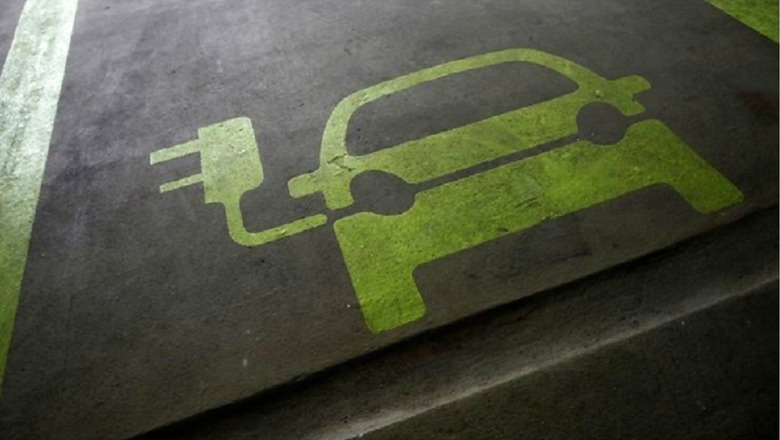
views
Envisioning quicker adoption and facilitating production of EV based mobility in India, the Government decided to increase subsidies on electric vehicles under FAME II. The massive revisions to the subsidy scheme is aimed at making EVs affordable to the masses.
The announcement by the Ministry of Heavy Industry is expected to drive the growth of EVs in India through faster adoption of two-wheelers, three-wheelers and buses. The three wheeler sector is integral to the overall acceptance of EVs in India as these vehicles are widely visible and can set a great example for sustainability in shared mobility whether it be last mile cargo delivery or day to day passenger commute.
”Aggregation will be the key to bring the upfront cost of electric three wheelers at an affordable level and at par with ICE three-wheelers,” the Department of Heavy Industry believes. The move aims to generate demand by extending support to 7000 electric buses, 3 lakh electric three-wheelers and 10 lakh electric two-wheelers across the country. The FAME II (Faster Adoption and Manufacturing of Electric Vehicles in India) aims to provide considerable financial benefits to EV manufacturers to help reduce the cost of ownership for the end customers.
The Government, as per the recent amendments to FAME-II, plans to appoint Energy Efficiency Service Limited (EESL) as an aggregator to leverage the demand of three-wheeler EVs, by providing EV manufacturers with bulk orders helping them in economies of scale with better inventory management.
The second wave of COVID-19 posed scaleup challenges for EV & Automobile OEM industry and paved the way for startups to drive superior technology adoption through situational innovation. Altigreen, a leading EV company, is already gaining momentum among last-mile mobility enthusiasts with its India-focused innovations in purpose-built vehicles in last mile logistics.
Here’s how FAME-II can be a game-changer and enhance faster adoption of EVs in 2021:
Rising (fossil) fuel prices
The fuel prices around the country are at an ATH (All-time High) and drivers/owners are looking for sustainable solutions that are easy on their pockets. The inclusion of the FAME-II subsidy is set to influence the decision making as EV and ICE vehicles reach price parity, pushing more vehicle aggregators shift to EVs from existing ICE fleets. neEV, Altigreen’s flagship three-wheeler is quickly becoming popular among aggregators and fleet owners alike, owing to the incredibly low running costs at just 82 paise per km (against ₹4-5 in the case of ICE).
The Environmental Advantage
Conventional fossil fuel based vehicles pose a grave threat to the environment as every year, more than a million people in India succumb to the increasing air pollution. The pandemic has changed the perception of businesses, aggregators and masses alike who are looking for sustainable solutions that are more environmentally friendly than their counterparts.
EVs in accordance with Indian needs
The differentiated environmental & market needs for India and the Emerging nations (South Asia, Africa, South America) when compared to the rest of the world like China, Germany or the US, demand R&D in accordance with the local needs. FAME-II is expected to help manufacturers build solutions that focus more on the reliability, reduced wear and tear, tolerance to unprofessional driving, and (over)load management, all of which are established norms for commercial vehicles in Indian markets.
Technology driven by Usability
Technological advancements in emerging markets like India revolve around making the EVs more cost effective and easily accessible through widespread distribution and reachability. The availability of vehicle service locations and spare parts and related costs drive the demand in new markets.
Better batteries with easy replacements would help pull more people towards EVs as the Indian consumers are sensitive to metrics such as mileage and fuel consumption of the vehicle. With EVs, range anxiety is an important factor that influences their adoption globally. Moreover, companies should focus more upon creating EVs that seamlessly operate on the existing power standards of the country.
Easy availability and extension of charging support through traditional wall sockets can be instrumental in the fast adoption of EVs. Continuous research to provide a better battery chemistry at a lower price, is expected to bring revolutionary changes in the mindset of Indian consumers regarding electric vehicles.
However, the most important element for the continued adoption of EVs in 2021 has to be the motor. Electric motors constitute the heart of EVs as they fuel the drivetrain by converting electric energy to mechanical energy. Optimum regeneration of power along with low consumption in harsh Indian conditions is the key to provide better products carefully positioned to meet the needs of the market.
The electric motors developed at Altigreen for neEV, emphasize upon sustainability, durability and high-efficiency over the long run. Altigreen’s 3-phase motor drives 8.25kW power, 800Nm torque on wheels, capable of 10,000 RPM and works efficiently across a wide temperature range from (minus) – 20°C to +120°C, the company claims.
The integration of IoT based telematics to provide a host of features to the business, individual or aggregator such as vehicle management, routes and directions, tracking and monitoring vehicle health and service issues – would help people adopt EVs. FAME-II subsidy is a huge stride forward in this direction as companies would be able to extend features like telematics and IoT based implementations to their customers with relative ease at an affordable price.
At the drivetrain level, Altigreen’s focus on optimization of the EV gearbox through gear tooth micro-geometry innovations, ensures long life even in harsh Indian conditions. The fact that its special clutchless EV gearbox can transfer power at a higher efficiency across the electric motors, and that too upto a whopping 10000 RPM is impressive. Although clutchless gearboxes have now become mainstream, their ability to evenly distribute power at higher speeds is integral in the smooth functioning of the vehicle.
Overall, the Government’s continued support in bringing EVs to the forefront has been largely beneficial for the whole EV ecosystem as it provides an opportunity for more innovation, better acceptance and deeper penetration in the emerging Indian market.
Read all the Latest News, Breaking News and Coronavirus News here.














Comments
0 comment